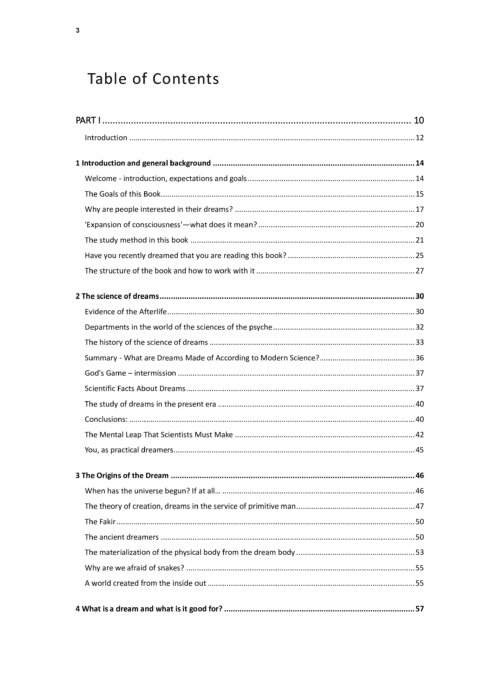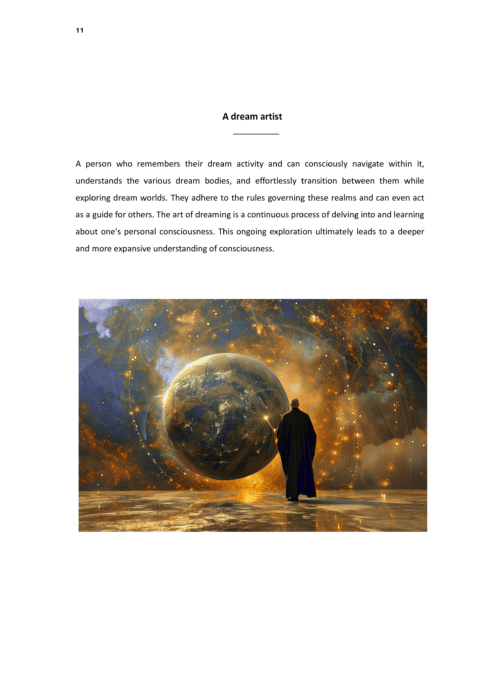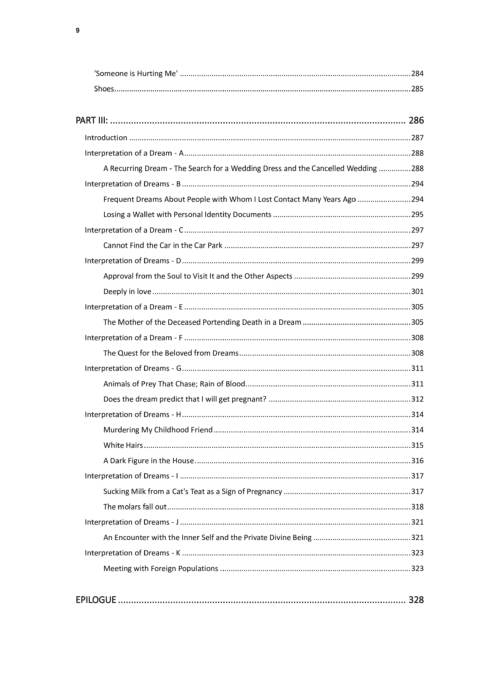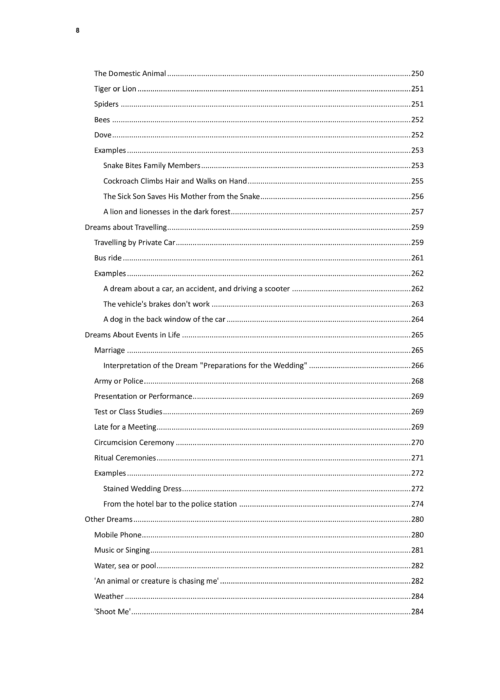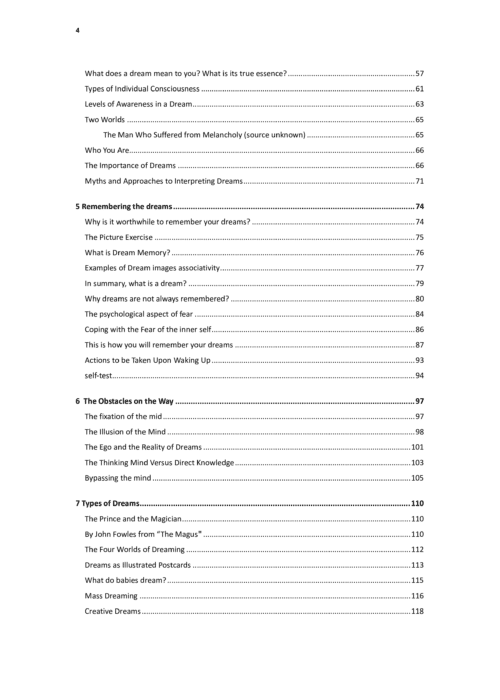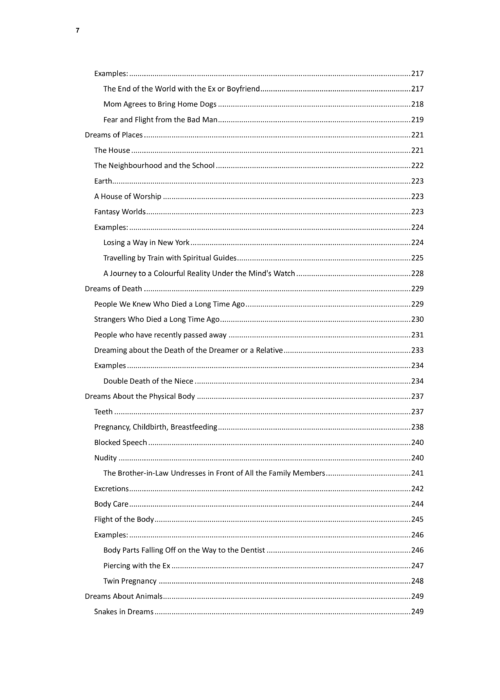- No products in the cart.

Master of Dreams
Unlock the enigmatic realms of your dreams with this Energetic book. This guide offers profound insights into the objective dimensions of dreams, teaching you the language of your own subconscious. Shaw shares decades of dream exploration, providing you with a compass for self-awareness and enlightenment.
This book is more than a read—it’s a transformative journey. It’s designed for those ready to embrace change and delve into the mysteries of their inner world. If you’re prepared for a profound shift in your life, “The Master of Dreams” awaits to guide you through your soul’s hidden corridors.
✨A unique benefit awaits buyers of this book: you are entitled to 10 conversations with me. For instance, you can request interpretations of your dreams and consult about them. If interested, please contact me after your purchase via email (support@lovush.com) or WhatsApp (using the green button at the bottom right corner of the screen).
This book serves as a comprehensive, one-of-a-kind guide, unraveling the universe of dreams. It offers techniques for remembering and interpreting dreams, enabling you to delve into the secrets of your dreaming self through unforgettable nocturnal journeys. From analyzing various types of dreams to exploring lucid dreams and out-of-body experiences, this book is indispensable for anyone keen on discovering the hidden meanings behind their dreams and those of others. It is designed for both experienced dreamers and novices, helping you to understand and interpret dreams in a new light, viewing the dream space as a fertile and nurturing platform for encounters between humans and their ever-present souls.
“Master of Dreams” is an energetically charged book, featuring sixty-seven captivating illustrations and charts that not only illustrate the content but also enrich the learning experience. The insights of the book are conveyed implicitly and extend beyond the reading time itself.
Written by David S. Shaw, “Master of Dreams” draws on his decades of experience in the art of dreaming. The book promises to change your life in multiple areas, including health, finance, and relationships, through the close connection you will forge with your soul. It is intended to be a faithful and devoted companion, a treasure trove of knowledge to which you will return time and again.
- 🎖️Please be aware that the digital version of this book is available as a PDF file for reading on our website, and cannot be downloaded.
——————
1 Introduction and general background
He who wanders far, knows a lot
Welcome - introduction, expectations and goals
In this chapter, we will delve into the preparations and technical details, as well as explore the essence of initiating the dreaming. This era mar
תוכן העניינים
1 Introduction and general background
He who wanders far, knows a lot
Welcome - introduction, expectations and goals
In this chapter, we will delve into the preparations and technical details, as well as explore the essence of initiating the dreaming. This era marks a period of change in your life, and the book will be there to guide you. Keep these words in mind, for in a few weeks or months, you'll look back and realize how significantly your life has transformed. Born in Jerusalem, my background is diverse, encompassing law, management, and economics. I highlight this to emphasize a crucial point: mastering the art of dreaming requires no prior knowledge or specific training. Your educational background or courses taken are irrelevant. What matters is your willingness, desire, awareness, and capacity to learn. If you're holding this book, you likely already possess these qualities.
There's no need to know how to recall your dreams beforehand, as the book will teach you this skill. Early in its pages, you'll learn techniques to remember and enhance dream recollections.
My journey into the world of dreams spans several decades, beginning in childhood. This exploration has deepened over time, revealing a profound link between my dream experiences and my physical reality.
The repeated reference to the "dream world" in this book is intentional. It underscores the reality and validity of this world, equally tangible and real as our physical existence. While some may intuitively sense this, others might find it unfamiliar. That's the purpose of this book – to explore and learn, allowing the dream world to reciprocate the attention you give it.
This chapter will outline the book's objectives, describe its approach to teaching the art of dreaming, and explain its structure.
The Goals of this Book
Acquiring Knowledge: Many readers approach this book seeking information about dreams, and indeed it delivers an abundance of knowledge. While typical non-fiction works aim to impart information for personal or professional enrichment, this book goes beyond. Yes, you will gain insights from various perspectives, but imparting knowledge is just one aspect of its purpose.
Expanding Consciousness: This is the book's core theme. It aims to broaden your mind and elevate your personal awareness. Regardless of your current level of consciousness, there's always room for expansion. The book eschews quick, artificial means like drugs or plants for consciousness expansion, advocating a natural, mind-based approach instead.
Learning Your Personal Dream Language: This book will teach you how to interpret your own dreams. While everyone has the potential to understand their dreams, this book provides the necessary tools to refine this skill. It focuses on self-interpretation rather than deciphering the dreams of others. This is crucial, as understanding your own dreams and the meanings of their hidden images is the first step. With clear and bright intentions, you might even assist others in interpreting their dreams.
The skill of dream interpretation originates from an observant mindset, from the ability to analyze dream events from a detached, non-judgmental perspective. Judging yourself in your dreams hinders progress. For instance, if you dream of hitting someone, waking up feeling guilty, and obsessing over what this says about you as a person, you'll overlook the dream's true meaning—a release of accumulated mental stress, perhaps from work pressures.
As stated, mastering dream interpretation—learning the language of dreams—is a gradual process, building skill layer by layer. By reading this book and recalling your dreams, you'll allow the energy within them to be released, adding to the reservoir of images in your mind. It's your attention to the dream world that enables it to merge into and influence your waking life.
Embracing Change: The culmination of these elements leads to transformation, a desire shared by many readers. Whether it’s in relationships, wealth, health, or self-esteem, change is often sought for improvement. This book serves as a catalyst for such transformation. It contains 'energy capsules' that, when embraced with openness and readiness, can significantly alter your life. The depth of this change depends on your willingness to accept it. Remember, you always have the option to pause and maintain your current life's status quo.

Enjoyment- the pleasure we derive from wandering in the world of dreams comes in various forms. To enjoy flying in a dream, just for the sake of flying, is a delightful experience. Those who have experienced this in a dream know its immense joy. You can meet strangers, chat, and interact with them freely in a safe space. It's even possible to make dream journeys into the past and the future. You might wake up in the morning with insights about what will happen in a year or a week, all thanks to a dream, even if you don't clearly remember its details. Dreams can offer deep emotional experiences, such as encounters with loved ones, both real and imaginary. You can interact with them, from a brave and close hug to a full and satisfying sexual connection. I will reveal now that sex in a dream can bring great pleasure when it's with energetically balanced dream figures. However, it's important to be discerning about who you associate with in the dream world, as not everyone is suitable for such intimacy, regardless of their attractiveness. I will delve deeper into this topic later, in the appropriate chapter.
One of the most memorable joys I have experienced in the dream world is wandering through the universe. I left Earth to explore space, gazed down at our blue marble, and from there, embarked on a journey across the cosmos. It's an indescribable, powerful experience, with freedom and liberation as its main motifs. It may sound unbelievable, but you can indeed be an astronaut without undergoing NASA's grueling training.
Why are people interested in their dreams?
Have you ever felt a compelling inner urge to learn more about your dreams? Dreams have always been a mysterious phenomenon that draws our intrigue. Without this fascination, you likely wouldn't be reading this book.
So, what drives this deep interest in understanding dreams? Where does it originate? From birth, we become aware of a new consciousness and naturally desire to explore its meaning and impact on us. Life experiences help us observe this consciousness, ourselves, and understand it. This exploration is facilitated by our five senses. There exists a cycle of mutual reinforcement between the senses and consciousness. For example, consciousness directs vision to gather information from reality, and as this information is collected and assimilated, consciousness expands because of it.
Consciousness aims to comprehend its capabilities and essence, engaging various faculties like logic, telepathy, imagination, thinking, creativity, and dreaming. These are the tools consciousness uses to experience and know itself.
There is a distinction between the thinking and dreaming skills compared to others. Thinking and dreaming are direct experiences. When you think or dream, you're engaged in an authentic, existing experience, unlike other more ethereal skills. This is why people enjoy thinking and dreaming. The evidence supporting the validity of dreaming is both subjective—the dreamer wakes up recalling a dream—and objectively convincing, offering more assurance than many of today's scientific findings.
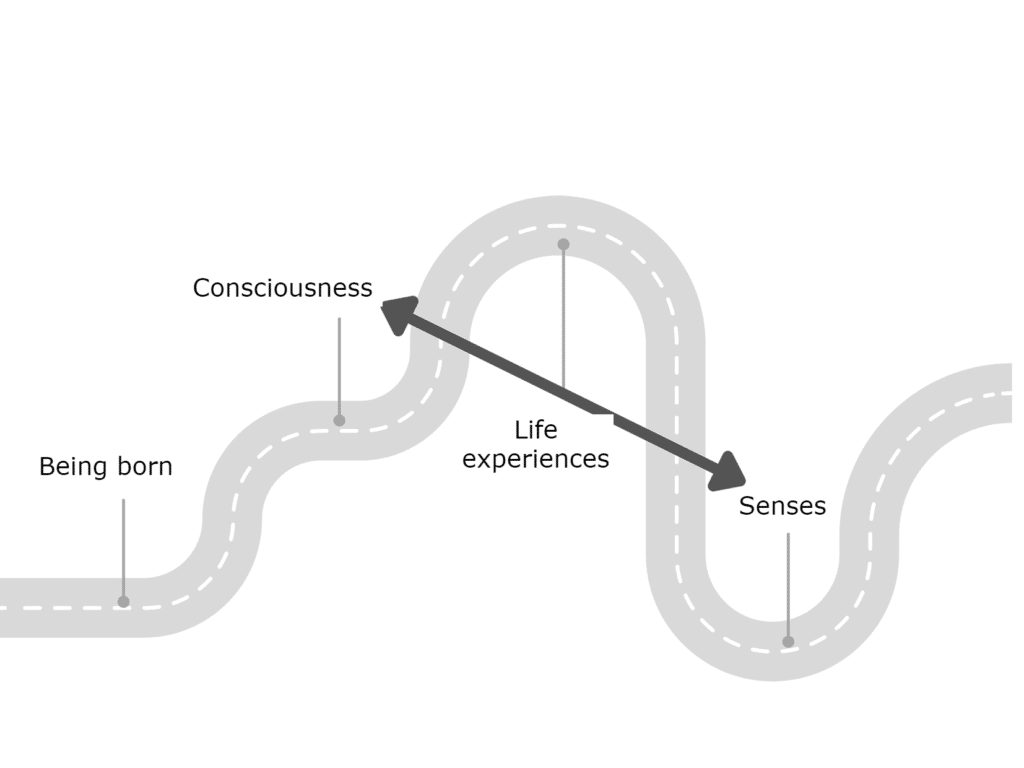
Consider this: science informs us about DNA, but how many have actually seen a DNA double helix? Science speaks of the universe's vastness, yet how many have personally observed distant galaxies or black holes? How many can distinguish between different atomic elements? Likely, very few.

In contrast, dreaming is accessible to everyone. It's a personal experience, validated by the memory of it upon waking. Scientific tools, no matter how sophisticated, like microscopes and telescopes, often provide secondary means of investigation. They can distort reality more than subjective tools such as thoughts, feelings, or intuition.
This is precisely where the desire to explore dreams becomes relevant. Through your dreams, you can learn about your own existence and the broader universe around you. Since ancient times, humans have strived to understand themselves better. Therefore, your inner urge to delve into your dreams is rooted in reality. Its origin lies not within the intellect but extends far beyond it. Although the mind, in its quest for knowledge, might sometimes feel unfulfilled due to the constraints of the rational world it inhabits, it continually searches for answers. The inner voice that longs for dream exploration has been smoldering within you for quite some time. Now, at last, you are heeding its call and allowing this wisdom to reach you. By giving yourself the opportunity to comprehend the nature of dreams, you are achieving something remarkable. Celebrate this accomplishment; don’t be hard on yourself about it.
'Expansion of consciousness'—what does it mean?
Engaging with the dream world introduces you to what I call "the dreaming self." This entity, a part of you, is entirely unfamiliar to your waking self. You know your waking thoughts, feelings, and personality, but the dreaming self operates alongside, unrecognized.

Upon waking, you can't locate the places from your dreams. Similarly, when dreaming, you often can't find your waking-life street. In dreams, you may feel disconnected from your waking personality, as if living an entirely different life. It takes time to refocus in physical reality after emerging from such dreams.
However, the dreaming self is your true identity, which we will explore further later. For now, understand the fascinating and mysterious nature of this idea.
Expanding consciousness leads to increased self-awareness. As you explore the relationship between your dreaming and waking selves, you discover the realities of the dreaming self. This recognition broadens your understanding of the personality, both generally and specifically. You begin to comprehend your behaviors and life processes better, seeing the connection between your two realities: the physical world perceived by your senses and the sustaining etheric world of dreams, also known as the matrix.
In conclusion. the primary goal of this book is not just to acquire knowledge about the dream world or to effect change in your reality, though these are valuable objectives. Instead, the book focuses on expanding personal consciousness. Most benefits you'll gain from this book arise from connecting your known self with the deeper dreaming self or "soul," which, for many, remains distant. Strengthening this connection is our main objective.
The study method in this book
You have likely participated in some form of learning, such as university studies or a digital course. You may have noticed that these are typically conducted face-to-face, with a teacher presenting educational material directly to students. You were probably advised that following specific rules, adhering to the study methods, and utilizing recognized learning tools would lead to desired outcomes, such as increased knowledge and intelligence. What are some examples of these tools? They include completing homework on time, attending classes, and actively listening to the teacher.
However, this book adopts a different approach. It challenges conventional learning norms, particularly regarding the act of falling asleep. Commonly, if reading a book makes you sleepy, you might deem the book dull and uninteresting. In this case, it's different. A significant portion of learning occurs during sleep. Therefore, feeling sleepy while reading a chapter is actually beneficial. If you sense your eyes getting heavy, embrace that feeling, set the book aside, close your eyes, take a few deep breaths, and allow your body to sleep for as long as it needs, be it hours, minutes or seconds.
This occurs because, while reading, your inner, dreaming self – which I mentioned earlier – communicates with your conscious mind, prompting it to sleep so that messages can be directly absorbed by the brain. In other words, the mind processes text, which has a corresponding element in the etheric, dream world. This parallel represents direct knowing, insights that lie between the words and lines. When you fall asleep, these insights may permeate your consciousness and become part of your waking reality.

Throughout this learning process, mental layers will shed from you like onion peels. Concepts you've been taught so far that are no longer useful will vanish, revealing the core of yourself. When you start challenging the rules and norms you've been taught and choose to discard them, you might feel slightly disconnected, as though you're not grounded in reality. Questions and concerns will arise: "Who am I? What is this reality? What is the meaning of my life? How do I handle all these new discoveries about life and reality?" These questions and doubts are both valid and beneficial. Gradually, you'll gain a deeper understanding of your fundamental existence.
Currently, these concepts might seem abstract, but remember, we are still in the introductory phase of the book, and clarity will come. As you read and engage with this book, you'll connect with your inner self, and you may start experiencing a sense of freedom in your daily life and routine. This freedom will grow, and you'll feel a lift, partly physical but mostly mental and emotional. The concept of freedom is crucial and, in dreams, it's often represented through the sensation of levitation. Those who have experienced floating or flying in their dreams will be familiar with this extraordinary feeling.

Through dreams, you'll receive affirmation of your existence. As mentioned, the dreaming self and the waking self coexist, and the dreaming self, the part of you that you might not always remember, will confirm your existence. You might have forgotten this part of you, but it hasn't forgotten you. This sublime self is like a higher version of you that you aspire to become, yet fear you might never connect with or embody.
Many people express a desire to improve themselves, to embody better qualities, but find it challenging. Now, try to feel that inner self, the part you always knew existed. For instance, when you see on the news someone displaying extraordinary bravery or kindness, you might think, "Yes, I can be like that too!" That's the self I'm referring to, which resides within you. Right now, this self is communicating with you in the dreams, encouraging you there. It's always there, always speaking, but often, you don't listen.
In many ways, this book will help you discover yourself. You might have picked it up wanting to learn about dreams, to interpret a dream about a deceased relative, or understand the messages in dreams. However, the true purpose of this book is to help you find yourself. Whether you realize it or not, this book will facilitate that discovery. So, you need to decide if you're ready to embark on this journey of self-discovery. Are you prepared to finally understand who you are? This is the essence of the book, and reading it will aid you in this pursuit.
"What does it mean to 'find yourself'?" When you look in the mirror, you see a figure, but you know that this figure isn't the entirety of who you are, just a part. For, where exactly in your body do you reside? In your nose? Your toe? Throughout your body? If you have an arm amputated, what happens to the part of you that resided in that arm? Where does it go? If you believe you exist in the atoms and molecules that constitute your body, what happens when these components are entirely replaced every seven years, and your physical body comprises entirely new atoms? Where does yourself go then?
You are much more than your body, and that is exactly what you will discover while reading this book. Who are these "you" and where they are!
Have you recently dreamed that you are reading this book?
I'd like to pose a question: Have you recently dreamt about the book you're currently holding? Maybe you dreamt of learning something, or perhaps you were in a classroom setting. Try to recall. It's possible that this dream occurred even before you purchased the book or before it came into your possession.
The answer is affirmative! You did have such a dream, even if you don't remember it. The reason for your lack of recall is that your awareness is focused on a narrow slice of reality. I assert confidently that you experienced this dream because dreams often hint at the future. Dreams not only have the potential to reflect the future but, under certain conditions, they can even shape it. This is an important concept to bear in mind, and I'll delve into it more deeply in the coming chapters.
Let me illustrate now the idea of a prophetic dream with an example from my own experience.

One night, I dreamt I was spending a day as the protégé of Azrieli, the entrepreneur and businessman known for building the Azrieli Towers. In the dream, I observed him and his wife entering a Judaica store, while I was watching them through the open window of a car. In the dream, I felt that he would soon give me money. And indeed, Azrieli glanced at me from inside the store, withdrew a bundle of bills, stepped outside, approached me, and handed me a one-dollar bill. He leaned in and said, "This note will be worth a lot in the market" – words that upon awakening remained clear in my memory.

After a dream ends, I usually try to find connections between it and the reality. However, this time, since nothing in my current life resonated with the dream, I set it aside in my mind. Days later, a relative sought my advice on a legal and financial issue related to a certain settlement. She felt that she was receiving too little. At that moment, I recalled my dream and advised her, "Compromise now, as the money you get today will be much more valuable in the future."
My confidence in offering this advice stemmed from the dream I had experienced a few days prior. She followed my suggestion, and about two years later, she invested the money in a property that significantly increased her wealth.
This experience demonstrates how a seemingly random dream can be relevant and useful in daily life. My engagement with my dreams enabled me to create the right context for this advice. Through this book, you too will develop an understanding of the relationship between your waking self and your dreaming self. As you progress in your learning, you'll see how this relationship manifests in real life.
The structure of the book and how to work with it
The book is structured into study chapters. There's no need to rush through them all at once, as mastering dreams doesn't happen immediately upon finishing the book. The process is gradual and evolving; it's never simply 'done.' You'll receive not just intellectual knowledge, but also deeper messages beneath your conscious awareness. This transfer of knowledge, from one level to another, occurs in your dreams while you sleep, making it crucial to allow time for learning.
The recommendation is to read one chapter per week, completing the first part in about three months. This period allows for the integration of your dreaming and waking selves. If you finish a chapter in less than a week, use the extra time for reflection and rehearsal, resisting the urge to start the next chapter. Conversely, taking more than a week is perfectly fine. The aim is not to rush but to trust in your own pace of learning and reading.
Chapters setting - The chapters in the first part comprise reading passages, dream interpretations, and specially created illustrations to convey the energy behind the words. This combination aims to open your mind and is crucial for practically applying the material, inviting the world of dreams in.
The second part describes various types of dreams, their general meanings, and includes examples. The table of contents helps you quickly find interpretations for specific dreams you've had.
In the third part, the dream interpretations reference relevant chapters. These showcase my approach to observing and interpreting dreams, hopefully inspiring you to use your dreams similarly. The book is content-rich; its table of contents shows the wide range of topics covered. While you may be drawn to specific topics like prophetic dreams and wish to jump ahead, I recommend reading in the intended order to open your awareness and foster mastery in dreaming.
When reading the book and practicing the art of dreaming, it's vital to avoid self-judgment. You'll encounter dream experiences which will affect your reality. Should you remember a dream where you acted inappropriately, refrain from self-criticism. Your current understanding of the dream world may not fully grasp the nuances of behaviors and events, which may not be as negative as they seem. Also, while the book may resonate personally, don't view it as judgmental. Understand that at this stage, you might not fully comprehend every symbol or level of the dream.
Remember, the book only provides tools; it doesn't do the learning or change for you. Becoming a master in dreaming requires practical application and experience. I share experiences from my life, including dreams of flying, meeting others, and winning the lottery. These may become part of your experience too. However, I clarify that my descriptions of drugs and projections of consciousness as described in the following chapters are not from personal use but from an authentic account of a renowned twentieth-century dreamer.
The time it takes to become a dream master is subjective, varying from immediate enlightenment to a lifelong journey.
Lastly, let's address the safety of dream journeys. Fears about delving into the depths of dreaming are common, but rest assured, the experiences and exercises in the book are safe. Avoid using drugs or stimulants and you will be safe. Your dreaming self monitors and safeguards your dream activities, preventing experiences you're not ready for. The safety issue, especially in out-of-body experiences, is revisited in a dedicated chapter.
With these guidelines, you're now ready to embark on the exciting adventure of exploring the art of dreaming. Approach it with courage, enthusiasm, and a sense of discovery.

